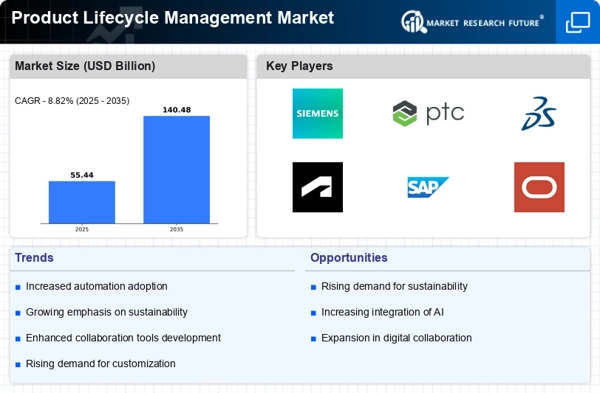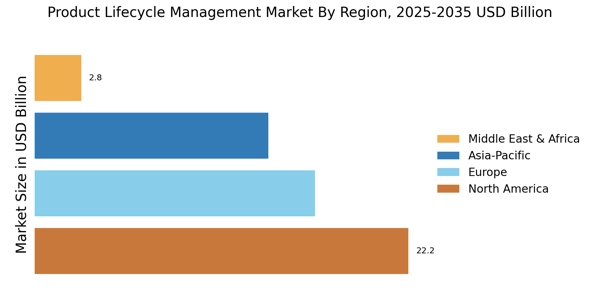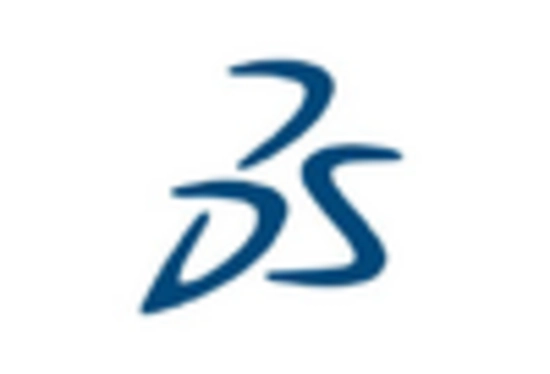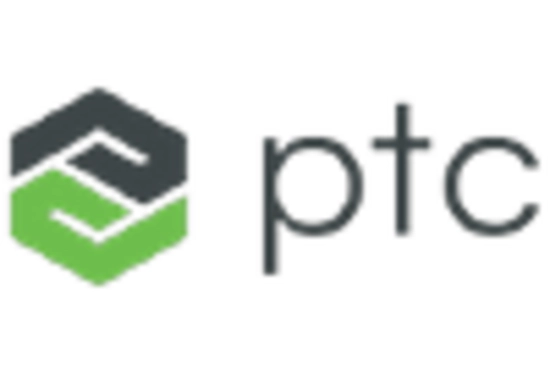Adoption of Digital Twins
The integration of digital twin technology is becoming a pivotal driver in the Product Lifecycle Management Market. Digital twins, which create virtual replicas of physical products, enable organizations to simulate and analyze product performance throughout its lifecycle. This technology allows for real-time monitoring and predictive analytics, leading to improved product design and maintenance strategies. Industry expert's reveal that companies leveraging digital twins can reduce maintenance costs by up to 20% and enhance product reliability. As industries increasingly recognize the value of data-driven decision-making, the adoption of digital twins is likely to accelerate, further propelling the growth of the Product Lifecycle Management Market.
Rising Demand for Efficiency
The Product Lifecycle Management Market is experiencing a notable surge in demand for efficiency across various sectors. Companies are increasingly recognizing the need to streamline operations, reduce time-to-market, and enhance product quality. This trend is driven by the competitive landscape, where organizations strive to maintain an edge. According to recent data, businesses that implement effective product lifecycle management strategies can reduce product development time by up to 30%. This efficiency not only leads to cost savings but also fosters innovation, allowing companies to respond swiftly to market changes. As a result, the emphasis on operational efficiency is likely to propel the growth of the Product Lifecycle Management Market in the coming years.
Increased Regulatory Compliance
The Product Lifecycle Management Market is significantly influenced by the growing emphasis on regulatory compliance across various industries. As companies face stringent regulations regarding product safety, environmental impact, and quality standards, the need for robust lifecycle management solutions becomes paramount. Organizations are compelled to adopt PLM systems that facilitate compliance tracking and reporting, ensuring adherence to industry standards. This trend is particularly evident in sectors such as pharmaceuticals and automotive, where regulatory requirements are complex and constantly evolving. The market data suggests that the adoption of PLM solutions can enhance compliance efficiency by up to 40%, thereby reducing the risk of penalties and enhancing brand reputation. Consequently, the focus on regulatory compliance is expected to drive the expansion of the Product Lifecycle Management Market.
Focus on Sustainability Initiatives
Sustainability is emerging as a key driver in the Product Lifecycle Management Market, as organizations strive to minimize their environmental impact. Companies are increasingly adopting PLM solutions that facilitate sustainable product design, material sourcing, and end-of-life management. This trend is driven by consumer demand for eco-friendly products and regulatory pressures to reduce carbon footprints. Market data indicates that businesses implementing sustainable practices can achieve a 15% reduction in operational costs. As sustainability becomes a core business strategy, the Product Lifecycle Management Market is likely to witness significant growth, with companies seeking innovative solutions to enhance their environmental performance.
Growing Importance of Collaboration
Collaboration is emerging as a critical driver within the Product Lifecycle Management Market. As organizations increasingly adopt cross-functional teams and remote work models, the need for collaborative PLM solutions has intensified. These systems enable seamless communication and information sharing among stakeholders, facilitating better decision-making and innovation. Market data indicates that companies utilizing collaborative PLM tools can experience a 25% improvement in project outcomes. This trend is particularly relevant in industries such as consumer electronics and aerospace, where product development involves multiple stakeholders. The emphasis on collaboration not only enhances productivity but also fosters a culture of innovation, positioning the Product Lifecycle Management Market for sustained growth.


















Leave a Comment